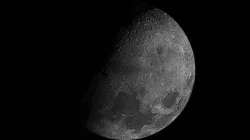Black Moon explained: Here's what it is and how you can watch this special celestial event
Black Moon is a special event that occurs every two years. This year's Black Moon will be visible from India and will take place on December 31.

On December 30, 2024, a special celestial event called the Black Moon will take place, captivating stargazers around the world. This event occurs when there are two new moons in a single month, which is quite rare and doesn’t happen every year. The Black Moon will happen at 5:27 p.m. Eastern Time (ET) or 2227 GMT, and for folks in India, it will occur on December 31, 2024, at 3:57 a.m. Indian Standard Time (IST).
So, what exactly is a Black Moon?
It’s a term used to describe this unusual occurrence of having two new moons within one month. A new moon is when the moon is positioned between the Earth and the Sun, making it invisible to our eyes since the side facing us is not lit. Just like a Blue Moon refers to two full moons in a month, the Black Moon refers to two new moons.
While new moons happen every month, having two in the same month is much less common, making the Black Moon a unique event. The last one was in August 2022, and the next will be in May 2026, which adds to its rarity. Because the Black Moon is not visible, it has an air of mystery that attracts both casual fans and serious astronomers.
Black Moon timing
In terms of timing, the Black Moon will be at its peak at 4:26 p.m. Central Standard Time (CST) on December 30, 2024. However, regardless of where you are, you won't actually see the Black Moon itself, as it is literally invisible during this phase. The way the moon is aligned means that the lit side faces away from us, leaving it in shadow.
Even though you can’t see it, the Black Moon can have a positive effect on nighttime viewing. Since there’s no moonlight during a new moon, the skies will be darker. This is a great opportunity for stargazing, where you can enjoy observing distant stars, galaxies, and planets more clearly.
ALSO READ: ISRO reschedules PSLV C60 launch timing for space docking experiment by two minutes
